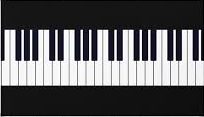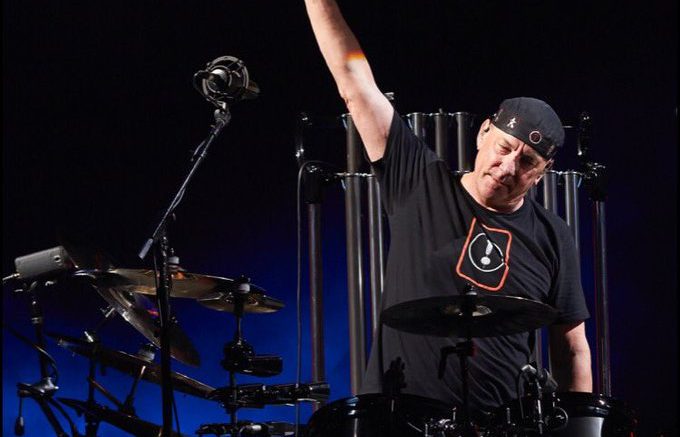Nick Krewen
Special to the Star
January 11, 2020
He was closer to our hearts than we even realized.
Make no mistake, the depth of anguish with which the music world – especially Canadians – regards the unexpected passing of Neil Peart, 67, on January 7 from glioblastoma, is immeasurable.
Arguably the greatest and most influential drummer of his generation, the Hamilton-born Peart – one third of progressive power trio Rush (affectionately known as The Holy Triumvirate Of Rock) – is a cultural loss on par to that of a Jimi Hendrix or a Kurt Cobain.
Through 41 years, 18 studio albums, 11 live albums and thousands of concerts, “The Professor” – as he was known for his almost-scientific time-keeping precision and meticulous fluidity of performance, not to mention the intellectual heft of his provocative, philosophical and socially observant lyrics – created his own niche with impeccable technique, uncompromised integrity and an inexhaustible drive for perfection, coupled with insatiable curiosity.
Alongside the shrieking vocals and immaculate bass playing of Geddy Lee and the dexterous proficiency of guitarist Alex Lifeson, Peart’s role when he joined Rush prior to 1975’s Fly By Night was immediately transformative, with the well-read drummer and lyricist introducing the objectivism of Russian-American philosopher Ayn Rand in the song “Anthem” and mythological and science-fiction influence in “By-Tor and the Snowdog.”
With each subsequent album, these literary and explorative traits would thrust Rush to greater creative heights, fueled in part by the meticulous polyrhythms and almost impossible time signatures that Peart crafted in tandem with the melodies created by Lee and Lifeson.
Peart’s contributions weren’t strictly rhythmic: by the time A Farewell To Kings debuted in 1977, the percussionist had added orchestral bells, tubular bells, temple blocks, cowbells, wind chimes, bell tree, triangle and vibra-slap to his arsenal, the impact of which was immediately felt on the album’s opening, title track in little melodic segues.
Even his drum solos like “The Rhythm Method” evolved into miniature, immaculately structured compositions that featured agreeable elements that stretched beyond the definition of rhythm.
These were uncharted, sophisticated waters that only grew Peart’s reputation for innovation, opening up possibilities for drum kit employment that invigorated the imaginations of a new generation of aspiring musicians.
As Rush continued to embrace new technology and ideas with albums such as Moving Pictures and Power Windows, Peart’s jaw-dropping technique consistently forced young players to elevate and re-evaluate their game, as they listened, learned and attempted to decipher each new notes as they heard it.
But Peart was a student as much as a teacher, relentlessly practicing to improve himself even as others felt he was the master.
In a 1996 Hamilton Spectator interview for his star-studded big band tribute to legendary jazz drummer Buddy Rich called Burning For Buddy, Peart discussed some of his own influences.
“It doesn’t matter if you’ve heard Buddy Rich, he’s influenced your playing,” Peart explained at the time. “The first drummer I was amazed by was Billy Cobham, who was taught by Tony Williams, who was taught by Elvin Jones before him. You don’t have to know that torch of genius that Billy Cobham was carrying, and the sparks of genius in those previous incarnations, were forged by Buddy.”
You’d be hard-pressed to find any rock drummer of note today – Foo Fighters Dave Grohl and Taylor Hawkins, Red Hot Chili Peppers’ Chad Smith, Tool’s Danny Carey, Smashing Pumpkins’ Jimmy Chamberlin – that don’t consider Neil Peart to be their Buddy Rich; a person who played an integral role in their desire to pick up a pair of drumsticks and inspire them to be the absolute best they could be.
And Peart’s stuff even inspired those who couldn’t play the instrument to save their lives, but enjoyed them in concert, to faithfully and enthusiastically pound the air with their own imaginary drumsticks to ape whatever triplets or ornate fills Peart threw their way.
On the literary front, inspiration, concepts and snippets of Tolkien, Rand, Samuel Coleridge and John Dos Passos, Hemingway influences among others stirred the intellect, with the band’s final masterpiece, Clockwork Angels, versed in steampunk and Voltaire.
During an interview for Grammy.com to promote “Clockwork Angels,” I asked Geddy Lee if he had to identify with Peart’s lyrics in order to compose music for it.
“Yeah, and it’s always a different experience. Some of his lyrics I respond to right away, and really don’t require a lot of discussion because I can just feel what he’s trying to say, and I can instantly see a way of expressing that musically.
“And sometimes it’s very hard for me. Sometimes I just cannot get into the same headspace, and that’s when either I just can’t make that happen, or it requires a lot of conversation and a lot of editing back and forth until we get on the same page.
“It’s a wonderful relationship because Neil is completely open. When I get into it with him, we can talk quite openly about where it needs to go.”
Throughout his career, Peart made it a point to stay out of the realm of the expected with his observations, and Lee felt that the drummer’s lyrics often appealed to discerning music lovers who wanted more substance with their sound.
“There’s an audience of people who has always been interested in rock that’s not simplistic,” Lee once told me. “And I think that some of the subjects that Neil has dealt with in the past lyrically have struck chords with people.
“A kid told me once that we are some kind of rite of passage, because he has all these friends that go to school, discover Rush, and then move onto other things. I like that.”
I can relate: after all, I was attending high school in St. Catharines when I discovered Rush. Like so many other of my classmates, music was my life, a consuming passion that provided the energy to endure another humdrum day of history and French lessons.
We all knew Neil was local, and there was a burst of civic pride when we discovered our slice of Lake Ontario frontage – “Lakeside Park” – had been immortalized on the album Caress of Steel, and by a Toronto band that was making international headway.
This suddenly opened up a realm of awareness and possibility: the fact that Rush could share the stage with such popular untouchables at the time like KISS, Blue Oyster Cult and Black Sabbath opened up the possibility of escape from a sleepy suburban town.
Rush proved that with hard work, discipline and succeeding on your own terms, that dreams were within reach.
That belief was personally galvanized when I heard A Farewell To Kings, a leapfrog in their creativity in my opinion from the previous 2112.
At that point, I had to see them in concert – and an upcoming Dec. 30, 1977 appearance at Maple Leaf Gardens provided the opportunity to organize a bus trip with fellow Laura Secord students that would pay for my seat in the golds and get me to Toronto and back.
Witnessing the trio faithfully perform the album was nothing short of exhilarating: stunning musicianship, amazing visuals – the band left quite an impression on me, galvanizing my desire to become more involved in the music industry in some way, shape or form.
The A Farewell To Kings live experience my introduction to the first of 12 Rush concert encounters that included an intimate Molson Blind Date club show at the Phoenix on December 18, 1996; their Oct 16, 2012 “Clockwork Angels” recital at the Air Canada Centre replete with a string section and the first of their final Toronto performances on June 17, 2015, an ingenious three-hour display that celebrated their 40th anniversary by recreating stage sets of the past, including my big arena attendance debut.
Little did we know that during the R40 tour, Neil soldiered on despite chronic tendonitis and shoulder issues.
Little did we know that not only would this be the final series of concerts, but that Clockwork Angels would be the final studio expression of a stellar career, though we collectively held out hope that more creativity from the trio would be forthcoming at some point in the future – even in spite of Peart declaring his retirement.
Here’s what I do know: Rush gave me great satisfaction and joy with their musical gifts, playing an integral role in my own life whether it was via soundtrack or their actions – and there are millions more like me out there who were similarly – and uniquely – impacted.
Neil Peart was a crucial part of the Rush equation.
His tragic passing will sting for a while.

